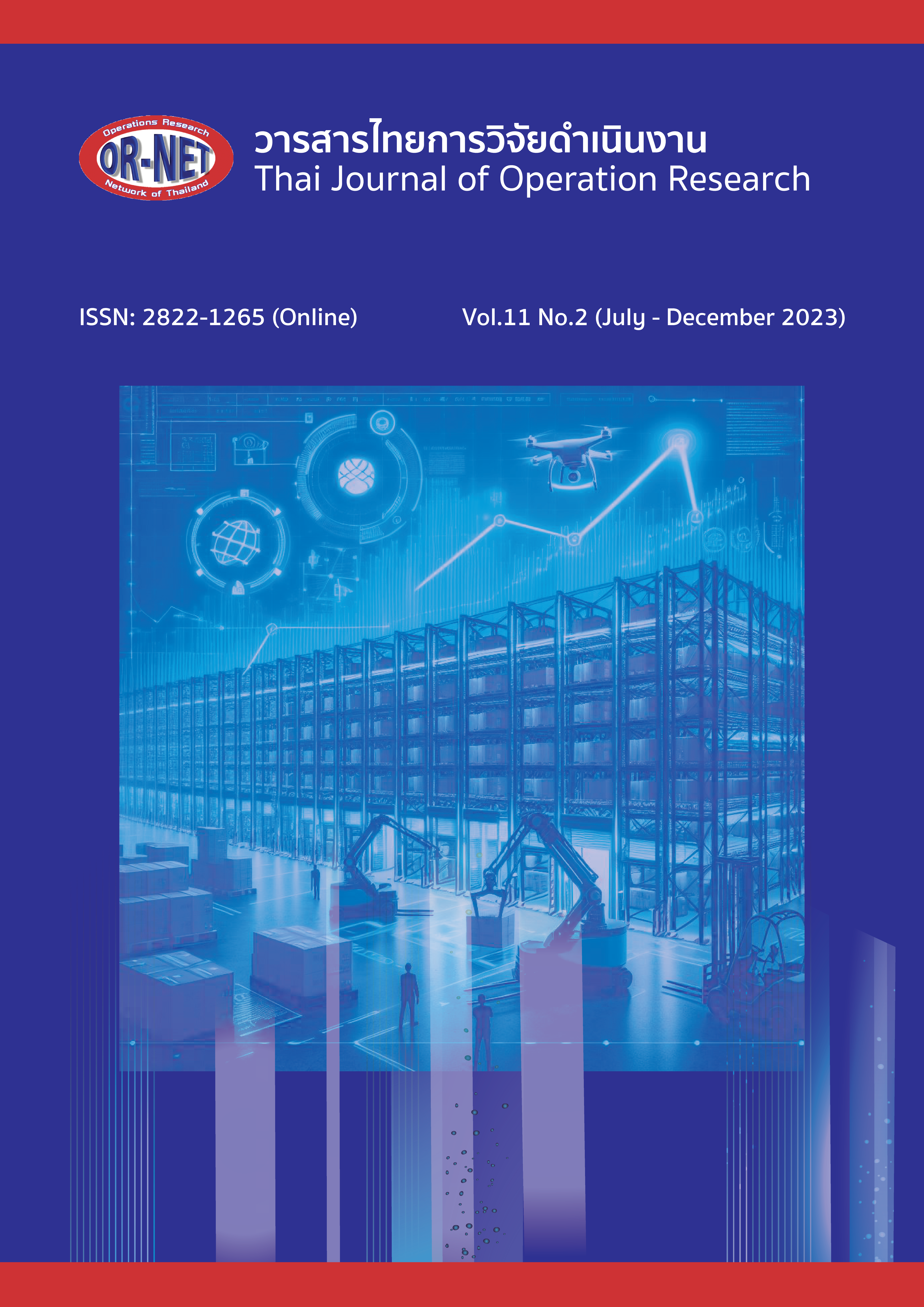The multi-objective nurse scheduling problem: A case study of private hospital in Thailand
Keywords:
nurse scheduling, mathematical formulation model, mixed integer linear programmingAbstract
Nurse scheduling is one of the most important tasks that greatly affects the performance of nurses. Ineffective scheduling may lead to health and mental problems – caused by lack of adequate rest and work stress – as well as burnout and job quitting. To avoid a costly process of recruiting and selecting appropriate medical personnel, efficient nurse scheduling is therefore needed; and we achieve this by help of a mixed-integer linear programming model. We expect that this approach would help reduce the planning time, as well as the errors pertaining to the current scheduling method, while increasing scheduling fairness, which is typically neglected in practice. In doing so, we have first collected all necessary data from experience nurses and, later, transformed them into a mathematical formulation model with three different objectives: (i) to reduce the excess cost of operating nurses, (ii) to increase workload equity, and (iii) to increase nurse’s satisfaction measured by reducing constraint violations. This model test was conducted through a small problem. Then, the results were used to validate the accuracy of both objectives and constraints in order to be a guideline for the construction of a nurse scheduling program in the future.
References
J. Guo, J. F. Bard, “A column generation-based algorithm for midterm nurse scheduling with specialized constraints, preference considerations, and overtime,” Computers & Operations Research., vol. 138, 2022.
R. Bruni, P. Detti, “A flexible discrete optimization approach to the physician scheduling problem,” Operations Research for Health Care., vol. 3, pp.191-199, 2014.
R. Silvestro, C. Silvestro, “An evaluation of nurse rostering practices in the national health service,” Journal of Advanced Nursing., vol. 32, no. 3, pp. 525-535, 2000.
E. K. Burke, P. D. Causmaecker, G. V. Berghe and H. V. Landeghem, “The state of the art of nurse rostering,” Journal of Scheduling., vol. 7, no. 6, pp. 441-499, 2004.
C. A. Glass, R. A. Knight, “The nurse rostering problem: A critical appraisal of the problem structure,” European Journal of Operational Research, vol. 202, pp. 379–389, 2010.
A. C. Svirsko, B. A. Norman, D. Rausch and J. Woodring, “Using mathematical modeling to improve the emergency department nurse-scheduling process,” Journal of Emergency Nursing., vol. 45, no. 4, pp. 425-432, 2019.
D. L. Kellogg and S. Walczak, “Nurse Scheduling: from academia to implementation or not?,” Interfaces., vol. 37, no. 4, pp. 355-369, 2007.
A. H. Nobil, S. M. E. Sharifnia and L. E. Cárdenas-Barrón, “Mixed integer linear programming problem for personnel multi-day shift scheduling: A case study in an Iran hospital,” Alexandria engineering journal., vol. 61, no. 1, pp. 419-426, 2022.
A. Legrain, H. Bouarab and N. Lahrichi. “The nurse scheduling problem in real-life,” Journal of Medical Systems., vol. 39, no. 1, pp. 160, 2015.
Downloads
Published
How to Cite
Issue
Section
License

This work is licensed under a Creative Commons Attribution-NonCommercial-NoDerivatives 4.0 International License.




